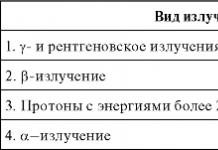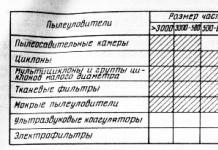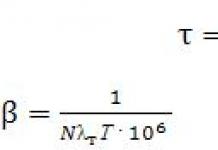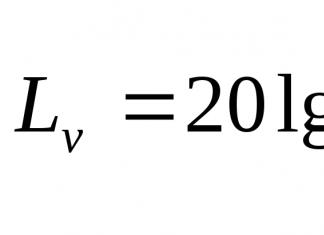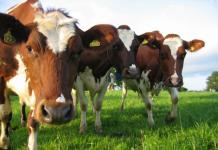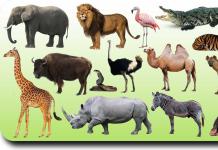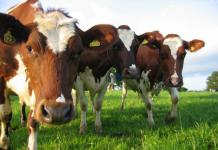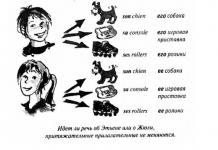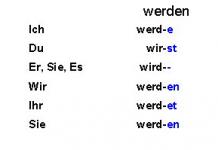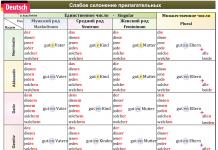Fat is one of the most talked about food elements. The opinion of one part of people is inclined to believe that it is necessary to limit it as much as possible in the food taken, the other part believes that this is not necessary. Where is the truth really hiding?
The need for fat in human nutrition
For a long time, fat was one of the optional components of food due to the fact that it is produced in the human body from carbohydrates and proteins. By definition, fat is not just an energy generator, it is one of the main components in the structure of tissues (together with proteins, it is included in the structure of cells). This element contains the necessary substances that are not synthesized or formed in small quantities in the body. Therefore, eating fat with food is a must.
How much animal or vegetable fat to eat?
It all depends on a person's energy expenditures: the more they are, the greater the need for fats. For example, for the population living in the middle lane and engaged in physical labor of a moderate nature, the diet per day should be about 2.5-3 thousand kcal, the proportion of fat in which is about 30 percent. Simple calculations yield 85 to 100 grams of fat. This includes not only the pure appearance of this substance, but also its content in products. For example, in common products (dairy products, eggs, fish), there is a sufficient amount of fat. For daily consumption, 15-20 grams of butter and a similar amount of pure vegetable oil are suitable. If you tend to be overweight or belong to the category of elderly people, then the recommended amount of vegetable oil (and it is important that it is unrefined) is from 25 to 30 grams. At the same time, it is better to try to replace part of the creamy one with sour cream if possible.
What to choose - animal or vegetable fat?
Choosing one species is a bad idea. Vegetable and animal fats complement each other, each of them separately does not have a complete set of necessary components. For example, butter has quite a few vitamins A and D, which are not in the category of vegetable fats. But vegetable oil contains vitamin E and more phosphatides - substances that promote the absorption of fat by the body. In addition, phosphatides reduce the percentage of cholesterol in the blood, preventing its deposition on the walls of blood vessels.
If the food lacks phosphatides, then this can lead to the deposition of fat in the liver. This substance can precipitate in a bottle of vegetable oil, so you should not immediately judge the quality of the product, having found such a "picture" upon purchase. The refining procedure results in the loss of phosphatides.
With animal fats, sterols, substances necessary for the formation of most hormones, enter the body. Dairy products are, in fact, the best source for them.
Output: all types of fats are needed by a person, but within a certain norm.
Proteins, fats and carbohydrates form the basis of proper nutrition and our health. For many years, there has been a debate about which fats are of great benefit to the body - vegetable or animal. This question is of interest not only to scientists.
Fats are a source of energy and essential substances. With a lack of fatty acids in the body, the body will try to process carbohydrates and proteins into fat. As a result, the development of the body can slow down, and health problems arise. Signs of a lack of fat in the body are problems with the skin and hair: the skin ages prematurely, and the hair loses its shine and healthy appearance.
There are several main types of fatty acids: saturated fatty acids are found in dairy products and meat; omega-3 polyunsaturated fatty acids - in flax oil and fish; omega-6 polyunsaturated fatty acids contain corn, sunflower and other vegetable oils; omega-9 monounsaturated fatty acids are present in.
Over the past decades, the question of which fats have the greatest health benefits has become somewhat of an eternal question. At one time, butter was considered harmful, while vegetable oil, on the contrary, was useful. Nutritional advice suggests that polyunsaturated fatty acids (PUFAs) do not lead to obesity and keep the heart healthy.
Numerous studies on this issue, carried out in the twentieth century, give contradictory results. There may be several reasons for this. First, there has not been a complete analysis of the association between cardiovascular disease and the type of fat in the diet. Secondly, it is possible that the research did not take into account some factors that seem insignificant at first glance.
The incompleteness of such studies does not give the right to make claims that vegetable fats are preferable to animals, or vice versa.
One of the possible solutions to this issue is the combination of vegetable and animal fats in the diet (1: 1 or 1/3: 2/3). This balance will help you avoid extremes and provide health benefits.
Vegetable oils can be eaten daily and at any age. Legumes - peas, beans, etc. - contain unsaturated fatty acids, vitamins and mineral salts. Food containing vegetable fats lowers blood cholesterol and helps prevent the development of atherosclerosis.
Of animal fats, it is better to give preference to cream and sour cream, which contain lecithin. Butter contains up to 40% of the monounsaturated oleic acid found in olive oil. But it is advisable to use it not every day.
As far as margarine is concerned, this is also a controversial issue. Some call it “everyday fat”, emphasizing its suitability for daily consumption. As a rule, vegetable fats are used for the production of margarine. Margarine is a product of a combination of animal and vegetable fats.
Remember: nature doesn't like extremes. Eating only vegetable fats or avoiding them altogether is hardly a healthy diet. Track your diet and well-being, and only then can you find the best option.
Scientists and nutritionists around the world are constantly debating the benefits and dangers of eating fat. So, in just 100 years, vegetable oil and butter, lard, and so on have changed several times with laurels of harm. And there was also a period when nutritionists proclaimed the most useful. The result was a temporary lull and continued research. One thing became clear - fat is needed, and without it there is no way to go.
We need animal and vegetable fats no less than carbohydrates and proteins. They are natural and carriers of substances important for the body. If you protect the body from the consumption of fat, then proteins will be transformed into fat, first of all. This course of events is fraught with sad consequences. First, there is a strong decline in reproductive function. Secondly, the slowdown in the development of the organism as a whole. Third, unexpected serious health problems are likely.
Our body uses fats as its main fuel (energy source) and constantly builds up reserves. There should always be a reserve. In terms of effectiveness, both vegetable fats and animals are 2 times higher than carbohydrates and proteins. The role of fats is also important in the regular metabolism. In addition to those fats that the human body synthesizes on its own, it is necessary to constantly recharge the reserves. This is due to the fact that when fat cells are created from proteins and carbohydrates, the body is not able to accumulate fatty acids and the corresponding set of vitamins. We can get animal and vegetable fats from food of animal and, accordingly, vegetable origin.
Why are vegetable fats better?
Unlike animal fats, vegetable fats have a number of unique properties. The most important are considered two: the absence of cholesterol and trans fatty acids. What are trans isomers? These constituents of animal fats, which greatly slow down the metabolism, disrupt the work of enzymes, raise blood cholesterol levels and increase the risk of cancer. It was the absence of these negative factors that became the main reason that solid vegetable fats (in particular, coconut oil) began to displace their creamy counterpart everywhere. They began to be used in the manufacture of ice cream, baked goods, confectionery, and more.
It is worth emphasizing that it is vegetable fats that contain which is an essential fatty acid. It is necessary for normal and generally human life, as it promotes the removal of large amounts of cholesterol. Vegetable oils are also a rich source of vitamins A, D, E, as well as antioxidants that slow down the aging process.
Vegetable fats and diets
Nutritionists quite actively defended the position of margarine in the daily diet instead of the usual butter. Firstly, the composition of this product is plant-based. In its manufacture, solid vegetable fats are used, which are easily absorbed by the body. Secondly, margarine does not affect the vascular system. it cannot boast. Margarine is a really healthy and necessary product.
No educated nutritionist will ever advise you to completely abandon animal fats. Animal and vegetable fats, although they have a number of similarities, cannot completely replace each other. For the normal functioning of the human body, both those and other components are important. In our herbal production only 15% of the total ingredients are taken up. In most European “long-lived” countries, the situation is absolutely opposite. This is at least one reason to draw some middle line. The body will only get better from this!
Random fact:
3.6% of cancer cases are alcohol-related. —
Article added by user Maria
02.11.2016
Vegetable fats
Vegetable oils or fats are products of natural origin, which are obtained in the process of processing plant materials. The human body is not capable of synthesizing vegetable fats on its own. Because of this, vegetable fats are classified as chemicals that are indispensable for the human body, the supply of which must be replenished frequently.
For the production of vegetable fats in industry, the fruits and seeds of oil plants are used. These include soybeans, olives, rapeseed, fruits of some types of palm trees, sunflowers and other plants. Quite often, for the production of these fats, oil-containing waste is used, which is obtained in the process of processing raw materials of plant origin. For example, rice, corn, seeds of grapes or cherries, as well as pumpkin and wheat germ.
There are several oilseeds from which fats are made:
- Sunflower
- Oil palm
- Cotton
- European olive
- Coconut palm
- Soybean cultural
- Cultural peanuts
There are also several families, such as:
- Anacardia (cashew oil);
- Legumes (groundnut oil, peanut butter, soybean oil, or soybean oil)
- Astro (artichoke oil, soflor oil and sunflower oil);
- Beech (beech oil);
- Dipterocarp (shorea oil);
- Grape (grape seed oil or grape oil, grape seed oil);
- Borage (cucumber oil);
- Cereals (rice bran oil or rice oil, wheat germ oil or wheat oil, corn oil);
- Cabbage (mustard oil, rapeseed oil, camelina oil or camelina oil);
- Poppy seeds (poppy seed oil);
- Palm (coconut oil, babassu oil, palm kernel oil, palm oil);
- Pumpkin seeds (melon oil and watermelon oil);
- Tea (tea oil)
The difference between vegetable and animal fats
Animal and vegetable fats have different physical properties and composition. It is not difficult to distinguish them from each other by external indicators. Vegetable lipids are flowable oils and animal fats are solids. The exception is fish oil, because it is in a liquid state.
You need to pay attention to the composition. Plant lipids are more dominated by unsaturated fatty acids, which have a low melting point. But animal fats contain a lot of saturated fatty acids, which melt at high temperatures.
They also differ in their origin. Sources of animal fats are pork fat, which contains 90-92% fat. Sources of vegetable fats are vegetable oils containing 99.9% fat.
It is worth replacing that unsaturated and saturated acids, which are contained in fats, are used in different ways by the human body. Saturated ones, such as palmitic or stearic, are required as an energetic material. These acids are found mostly in animal fats such as beef and pork. You need to know that an excess of saturated fatty acids increases cholesterol levels and provokes metabolic disorders.
Compared to animal fats, vegetable oils have unsaturated fatty acids, which help to eliminate excess cholesterol from it and are easily absorbed in the human body.
In plant lipids there is much more vitamin F. With a lack of this vitamin, a person can get sick with various vascular diseases: heart attack or atherosclerosis. In addition, numerous chronic diseases appear and the immune system weakens.
Composition of vegetable fats
The chemical composition of vegetable fats includes triglyceride fatty acids. In addition, vegetable fats contain natural compounds accompanying acids (wax, phospholipids, as well as sterols and free fatty acids).
Caloric content of vegetable fat
Energy value in the ratio of fats, proteins and carbohydrates: Fats: 99.8 g (~ 898 kcal) Proteins: 0 g. Carbohydrates: 0 g.
The benefits of vegetable fats
Scientifically proven fact is the benefits and importance of vegetable fats for the body. It is imperative for a living body to consume a certain amount of beneficial fatty acids daily with food. The composition of plant lipids includes a huge amount of vitamins E, D, A, in addition to this and the amino acids Omega-3 and -6.
The harm of vegetable fats
In addition to the benefits of this product, it should be noted about the possible harm of vegetable fats. If you eat vegetable fats uncontrollably and often, they can be harmful. In addition, vegetable fat is used in the composition of certain types of products, for example, in the manufacture of ice cream.
To leave a comment, you need to enable javascript.
Discussion of the article:
/modules.php?name=articles&action=set_comment&ingr_id=4893
There are no comments yet. Will you be the first?A good diet is based on understanding the difference between unhealthy and unhealthy fats how they act on the human body, how much animal vegetable fats are really harmful to health.
Minimizing or eliminating fat is a major mistake many people make when starting a diet. Butter is replaced with margarine, whole milk is replaced with skim milk. Instead of fried food, they start eating steamed food. This is due to the connection that a person finds for himself between consumed with food and the fat on the body.
This tactic is wrong. Low-fat foods are often more harmful than their counterparts. They are devoid of fat but contain simple carbohydrates. A balanced and healthy diet requires the presence of fats, but only the right ones. It is impossible to exclude this important element from the diet.
Unsaturated and saturated fats
Fatty acids, which are fats, differ in the number of carbon atoms. Each fat of vegetable or animal origin is a mixture of dozens of fatty acids, the most common of which, to varying degrees, are five to seven.
The classification of fats is usually not related to the number of carbon atoms. It is most often due to "saturation" with hydrogen atoms, that is, the absence or presence of free bonds. Trans fats are fatty acids with a chemically identical but geometrically different formula.

The value of fatty acids is determined by how they are absorbed and digested. Fats, the number of carbon atoms in which does not exceed 15, are absorbed by the body from the intestines, spent on metabolic processes. They make up a quarter of cow's milk, eighty percent of coconut oil.
Coconut fat is classified as dietary oil due to the fact that it is difficult to convert into body fat. This quality makes the refined palm oil, from which margarine is produced, quite dangerous. It is a trans fat with low levels of carbon oils and is absorbed directly into the bloodstream, making it unhealthy.
Omega-3, -6 and -9
They are fatty acids having 18 carbon atoms, present in any type of oil and fat, prevailing over other substances. Depending on the position of the double chain in the structure, they are Omega-3, -6 or -9.
The latter are considered neutral, ranked second in the body after Omega-6. They are found in olive, corn and avocado oils, yolks and beef fat.
Omega-3 to Omega-6 Ratio
The balance of these two fatty acids is of utmost importance. Omega-3 is not synthesized in the body, but it is necessary to maintain the immune system, the work of the cerebral cortex, and the implementation of metabolic processes. It is these fatty acids that are considered the most beneficial. Their positive effect on the body is reduced to a minimum in the presence of Omega-6.
The situation is aggravated by the fact that the concentration of Omega-3 in food is minimal. Half, and sometimes even a little more, of the composition of corn and vegetable oils is Omega-6. Consequently, as a result of cooking, their ratio shifts, which leads to metabolic disorders.
Animal fat - good or bad?
The composition of animal fat is a combination of various fatty acids, the concentration of which depends on the nutrition of the animal. Industrial cows are given corn. This increases the percentage of Omega-6 in the resulting product. Therefore, the actual situation may differ from the tabular data.
Saturated animal fat is called palmitic acid. It contains 16 carbon atoms. Its excess in the diet provokes the development of many pathological conditions. Palmitic acid makes up 25-30% of the total fat in butter, about 20-25% of egg yolk and beef fat.
Bad and healthy fats
Hazardous to health are corn and sunflower oils, the fat profile of which is 50-60 percent Omega-6. Depending on what the animal is fed under industrial conditions, these fatty acids may be present in chicken and beef meat.
Olive and avocado oils are healthier than sunflower and corn counterparts as they contain Omega-9. Frying food is best done in coconut oil, which tolerates high temperatures well. The truly dangerous animal saturated fats become when overused and nutritionally imbalanced.
Conclusion
Oils and fats are important for metabolic processes and health. And in order to avoid numerous problems, you need to maintain a balance in the diet, to be able to recognize the fat profile of the fat source.
Video review
 Omega 3-6-9 Fats: What's the Difference? Natural sources
Omega 3-6-9 Fats: What's the Difference? Natural sources  Simple and complex carbohydrates, useful and harmful
Simple and complex carbohydrates, useful and harmful


